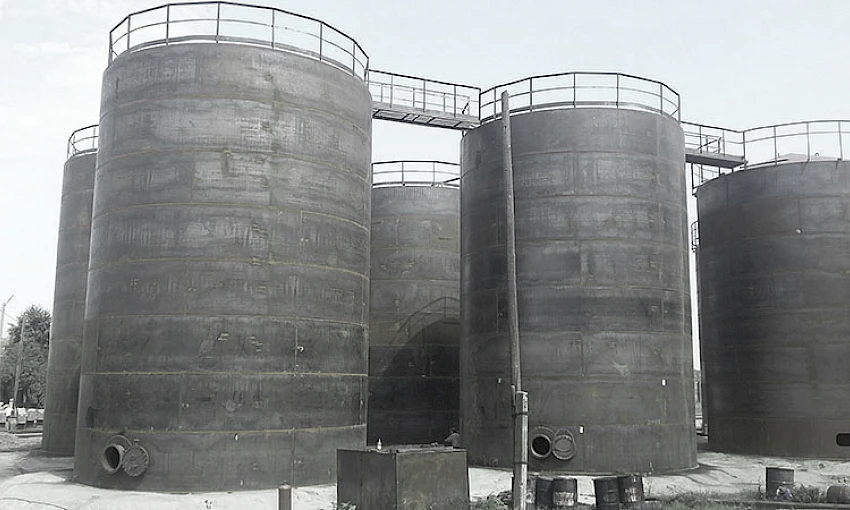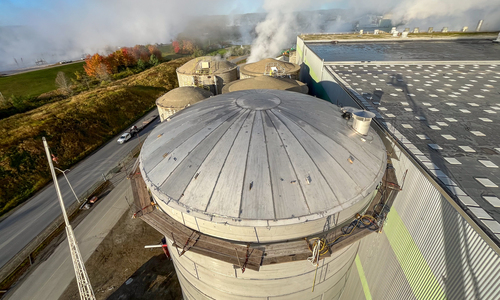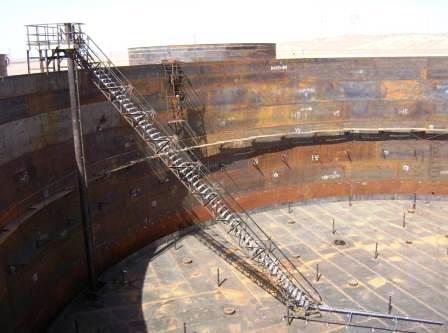The Role of API 650 Welding Inspection in Upholding Safety Regulations
A Step-by-Step Take A Look At the Installment Process of Welding Inspection Techniques
Welding inspection is a crucial procedure that assures structural integrity and safety and security. The setup of examination techniques includes a number of organized steps, each indispensable to achieving trusted outcomes. From preparation and tool option to conducting visual and non-destructive tests, each stage needs careful interest. Recognizing these treatments can greatly enhance high quality guarantee in welding tasks. What challenges occur in executing these methods, and exactly how can they be properly attended to?
Comprehending the Significance of Welding Assessment
Welding inspection is a critical part of ensuring architectural stability and safety in construction and production processes. This method entails evaluating bonded joints for problems, making certain that they fulfill particular criteria and guidelines. By systematically gauging weld quality, inspectors can identify concerns such as cracks, voids, and incomplete fusion, which can compromise the toughness and resilience of structures.
The importance of welding evaluation prolongs beyond immediate safety problems; it aids protect against expensive failures and potential hazards in the long term. Reliable assessment methods foster compliance with industry criteria, consequently improving the overall reliability of bonded elements. On top of that, a durable inspection process adds to preserving the credibility of building contractors and makers, as it guarantees customers of the high quality of their projects. Inevitably, comprehending the importance of welding examination is vital for promoting secure building and construction practices and making certain the durability of important framework and products.
Picking the Right Equipment for Inspection
When selecting the suitable tools for evaluation, it is necessary to ponder the particular requirements of the welding process and the products involved. Various assessment approaches, such as visual, ultrasonic, and radiographic testing, demand distinctive tools tailored to their special needs. For aesthetic evaluations, tools like multiplying glasses and calipers are critical for assessing weld high quality. Ultrasonic screening calls for specialized equipment capable of transferring and getting audio waves to identify internal flaws. Radiographic testing, on the other hand, uses X-ray or gamma-ray sources together with delicate film or digital detectors to expose variances.
In addition, individual safety equipment (PPE) is important to ensure the security of examiners throughout examinations. Choosing the right tools not only enhances the accuracy of inspections but also adds to the overall integrity and safety of the welding task. Consequently, a comprehensive understanding of offered tools and their applications is necessary for reliable welding assessment.
Getting ready for the Inspection Process
Prior to starting the evaluation procedure, it is crucial to establish a complete plan that details the range and goals of the evaluation. This plan ought to consist of specific criteria that specify what makes up acceptable quality in the welding job being evaluated. Recognizing the appropriate codes and requirements is important, as they will certainly guide the inspection standards and methods.
Additionally, personnel associated with the examination should be properly educated and licensed in welding examination techniques to ensure dependability and accuracy. A checklist can be beneficial in arranging the different aspects of the assessment, varying from devices preparedness to ecological conditions that could impact the assessment.

Logistical considerations such as scheduling, readily available resources, and interaction in between group participants should be attended to. By preparing methodically, inspectors can improve the performance of the examination and guarantee that all crucial variables are duly thought about prior to waging the evaluation itself.
Carrying Out Visual Assessments

Carrying out aesthetic examinations is a necessary action in the welding inspection process, requiring careful preparation to assure efficient analysis. Inspectors need to be familiar with key flaw indicators that can indicate potential issues in weld top quality. By concentrating on these aspects, one can boost the total dependability of the assessment end results.
Planning For Visual Evaluation
Aesthetic assessment acts as a crucial primary step in the welding assessment procedure, assuring that any kind of possible defects are determined early (API 650 Welding Inspection). Proper preparation is crucial for reliable visual assessment. Examiners must begin by examining relevant paperwork, consisting of welding treatments and specs, to recognize the task demands. They have to collect essential tools, such as multiplying glasses, flashlights, and suitable personal safety tools (PPE) A complete evaluation of the assessment area is vital; inspectors must confirm it is cost-free and tidy of obstructions. Additionally, it is very important to develop perfect lights conditions to enhance presence of welds. By taking these preparatory actions, examiners can develop a setting for determining inconsistencies and ensuring the honesty of the welded frameworks
Secret Flaw Indicators
A comprehensive understanding of vital problem signs is crucial during visual inspections to assure the high quality and safety of bonded joints. Inspectors should concentrate on details signs such as fractures, porosity, damages, and incomplete blend. Splits may show up as sharp lines and can jeopardize architectural stability. Porosity manifests as small holes that can deteriorate weld toughness. Undercuts, which are grooves along the weld edge, can bring about stress and anxiety focus. Insufficient combination suggests that the weld metal did not effectively bond with the base product, causing a weak joint. By systematically determining these flaws, examiners can ascertain conformity that site with market criteria and improve the overall reliability of bonded frameworks, eventually adding to much safer functional conditions.
Executing Non-Destructive Examining Techniques

Countless non-destructive testing (NDT) methods are integral to ensuring the stability of bonded frameworks without jeopardizing their capability. These methods enable examiners to evaluate weld high quality and find issues without causing damage to the products being tested. Usual NDT techniques consist of ultrasonic screening, radiographic testing, magnetic fragment testing, and dye penetrant testing. Each approach serves a specific purpose, resolving various kinds of imperfections such as splits, porosity, or insufficient combination.
Applying NDT techniques requires an organized strategy, starting with picking the ideal technique based on the materials and the nature of the weld. Educating personnel in these strategies is crucial for exact results. Furthermore, developing clear treatments and standards assurances uniformity throughout the assessment process. By integrating NDT into the welding inspection operations, organizations can boost the integrity of their products while lessening prospective threats related to architectural failures. This aggressive strategy ultimately right here adds to preserving security and quality criteria in welded buildings.
Analyzing and recording Examination Results
Effective documents and analysis of examination outcomes are important components of the welding examination process. Exact records of inspection searchings for act as a recommendation for high quality guarantee and conformity with market requirements. API 650 Welding Inspection. Assessors should utilize structured types or digital systems to log details such as the kind of weld, examination techniques employed, and any inconsistencies recognized throughout the evaluation
Extensive evaluation is crucial as soon as information is collected. This entails comparing outcomes against developed requirements to recognize patterns or recurring problems. Analytical devices might be employed to evaluate defects and analyze their effect on overall weld high quality.
Effective interaction of searchings for to relevant stakeholders is critical. Summaries and records ought to be clear and succinct, highlighting vital insights and suggestions for rehabilitative activities. By methodically documenting and examining examination results, organizations can foster continuous improvement in welding practices and improve item honesty.
Frequently Asked Questions
What Certifications Are Required to Come To Be a Welding Inspector?
To become a welding assessor, one normally requires appropriate accreditations such as AWS CWI, along with experience in welding practices, expertise of welding codes, and effectiveness in evaluation methods to ensure high quality and safety and security criteria.
Just How Often Should Welding Inspections Be Conducted?
Welding evaluations ought to be carried out frequently, normally after each weld is finished, and regularly during jobs. Elements such as project complexity, sector criteria, and governing demands can influence the frequency of these inspections.
What Is the Price of Welding Examination Providers?
The expense of welding examination services varies considerably based upon aspects such as job size, complexity, and area. Generally, rates vary from $100 to $150 per hour, with additional costs for specialized screening and accreditations.
Are There Certifications for Welding Inspectors?
Yes, there are numerous certifications for welding inspectors, consisting of those provided by the American Welding Culture (AWS) and the International Institute of Welding (IIW) These accreditations guarantee assessors possess the essential abilities and knowledge for reliable assessments.

How Do I Select an Inspection Service Provider?
To select an examination company, one should assess credentials, experience, industry track record, and consumer reviews. In addition, contrasting solution offerings and prices can aid assure the chosen company fulfills specific job requires properly.
Additionally, personnel included in the assessment has to be properly trained and accredited in welding examination strategies to assure reliability and accuracy. Conducting visual inspections is a necessary action in the welding examination procedure, calling for mindful prep work to assure reliable examination. Aesthetic assessment offers as a vital first action in the welding inspection procedure, assuring that any type of possible flaws Full Article are determined early. Efficient paperwork and analysis of inspection outcomes are crucial parts of the welding assessment process. Welding evaluations should be performed regularly, typically after each weld is finished, and regularly during tasks.